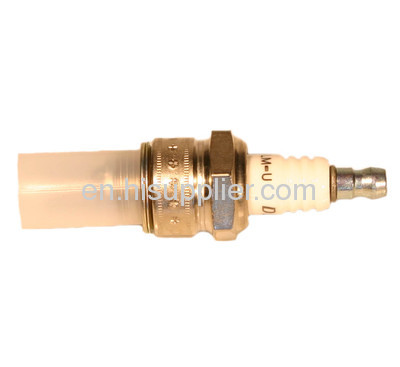

- #LAWN MOWER SPARK PLUG SOCKET HOW TO#
- #LAWN MOWER SPARK PLUG SOCKET INSTALL#
- #LAWN MOWER SPARK PLUG SOCKET FREE#
If it’s damaged or covered in debris, it could prevent the engine from starting.įinally, examine the tip of the spark plug for wear.
#LAWN MOWER SPARK PLUG SOCKET FREE#
It should be clean and free of any buildup or damage. Next, look at the electrode on the end of the spark plug. If it’s too large or too small, the engine may not start. The gap should be between 0.030 and 0.060 inches.
#LAWN MOWER SPARK PLUG SOCKET HOW TO#
In this blog post, we’ll show you how to tell if your lawn mower’s spark plug is bad, and what you can do to fix it. If your lawn mower isn’t starting, one possible reason is a bad spark plug. How to Tell If a Lawn Mower Spark Plug is Bad Using a ratchet wrench or socket set (depending on what type of spark plug your mower uses), unscrew the spark plug counterclockwise until it comes out completely.Īgain, be careful not to strip or damage the threads in the process. Once you have found the spark plug wire, gently pull it off of the spark plug terminal.īe careful not to yank or tug on the wire too hard, as you could damage it.Ĥ) Now it’s time to remove the actual spark plug from the engine cylinder head. On most models of Briggs & Stratton lawn mowers, this will be located near the front of the engine (see photo).ģ. Next, locate the spark plug wire attached to the spark plug. You don’t want to be working on a hot engine!Ģ. First, make sure that the engine is turned off and cooled down completely. Luckily, it is relatively easy to remove a spark plug from a Briggs & Stratton lawn mower.ġ. Over time, spark plugs can become fouled with dirt, oil and debris, which can cause them to misfire. It is important to regularly check and clean your lawn mower spark plugs to keep your mower running smoothly. How to Remove Spark Plug from Briggs And Stratton Lawn Mower A bright, steady sparks indicates thatthe spark plug is working properly. Pull the starter cord and observe the tester window. Ground the other end of the tester to the engine block or another metal surface on the lawn mower.ĥ. Insert the end of the spark plug tester into the spark plug hole.Ĥ. Clean any dirt or debris from around the spark plug hole.ģ. Remove the spark plug from the lawn mower.Ģ. It’s always a good idea to test your spark plug before starting up your lawn mower for the season.
#LAWN MOWER SPARK PLUG SOCKET INSTALL#
Now you’re ready to install your new lawn mower spark plugs! How to Test a Spark Plug on a Lawn Mower If necessary, adjust the gap with your spark plug gap tool according to manufacturer’s specifications (usually between 0.025 – 0. If it’s covered in debris or soot, use your wire brush or other cleaning tool to clean it off. Once the spark plug is removed, take a look at it closely. You may need to wiggle it back and forth a bit before it comes loose.

Next, use your ratchet or wrench to loosen the spark plug from the engine. This will prevent accidental starting while you’re working on the engine. – A wire brush or other cleaning tool (optional)įirst, make sure that your lawn mower is turned off and disconnect the spark plug wire from the terminal. – A ratchet or wrench (depending on the size of your spark plug) With a little patience and the right tools, you can do it yourself. The good news is that you don’t necessarily need a socket to remove a lawn mower spark plug. This can be a little tricky, since the spark plug is usually recessed in the engine and can be hard to reach. But first, you’ll need to remove the old one. If your lawn mower spark plug is fouled or damaged, you’ll need to replace it. How to Remove Lawn Mower Spark Plug Without Socket


 0 kommentar(er)
0 kommentar(er)
